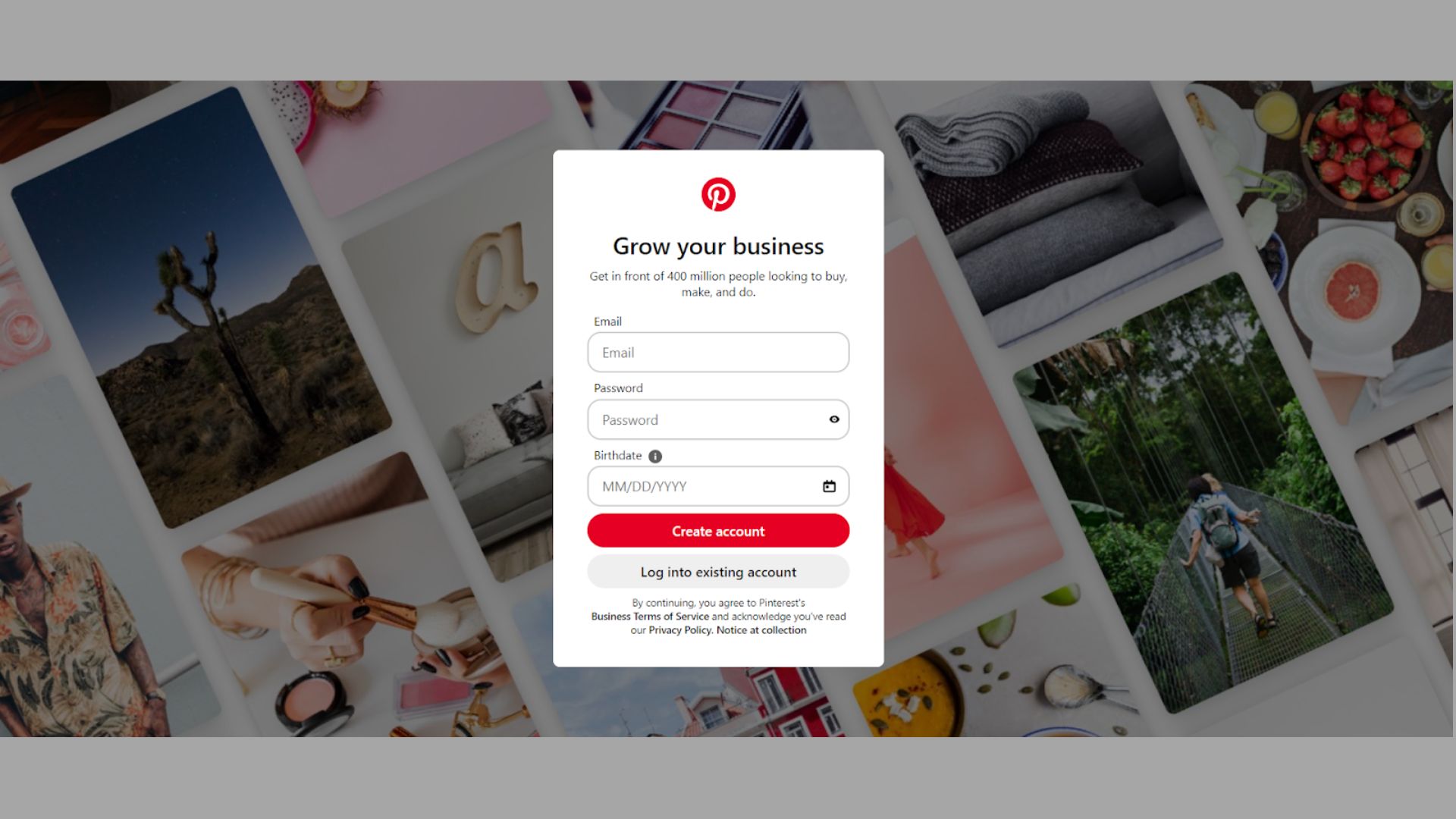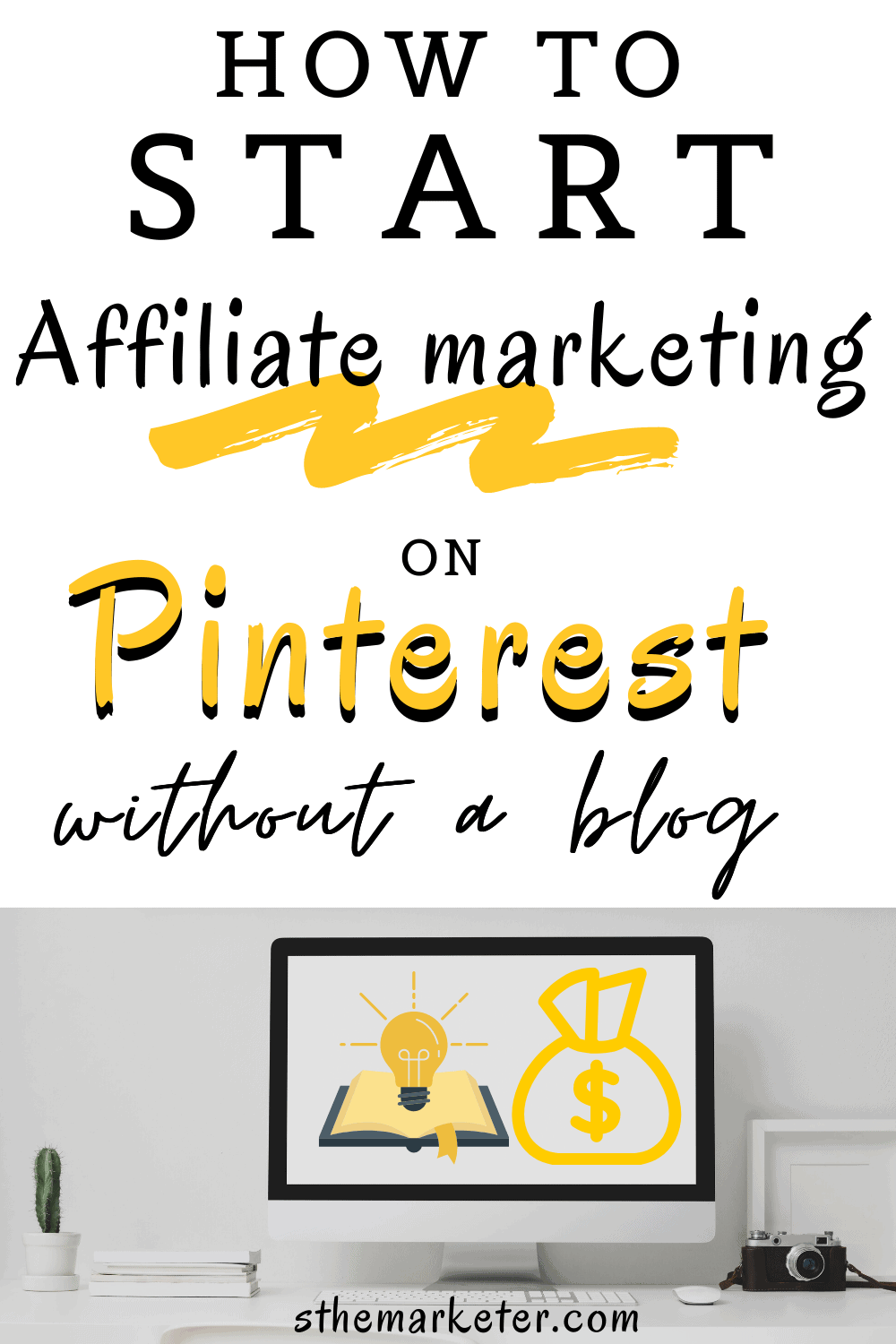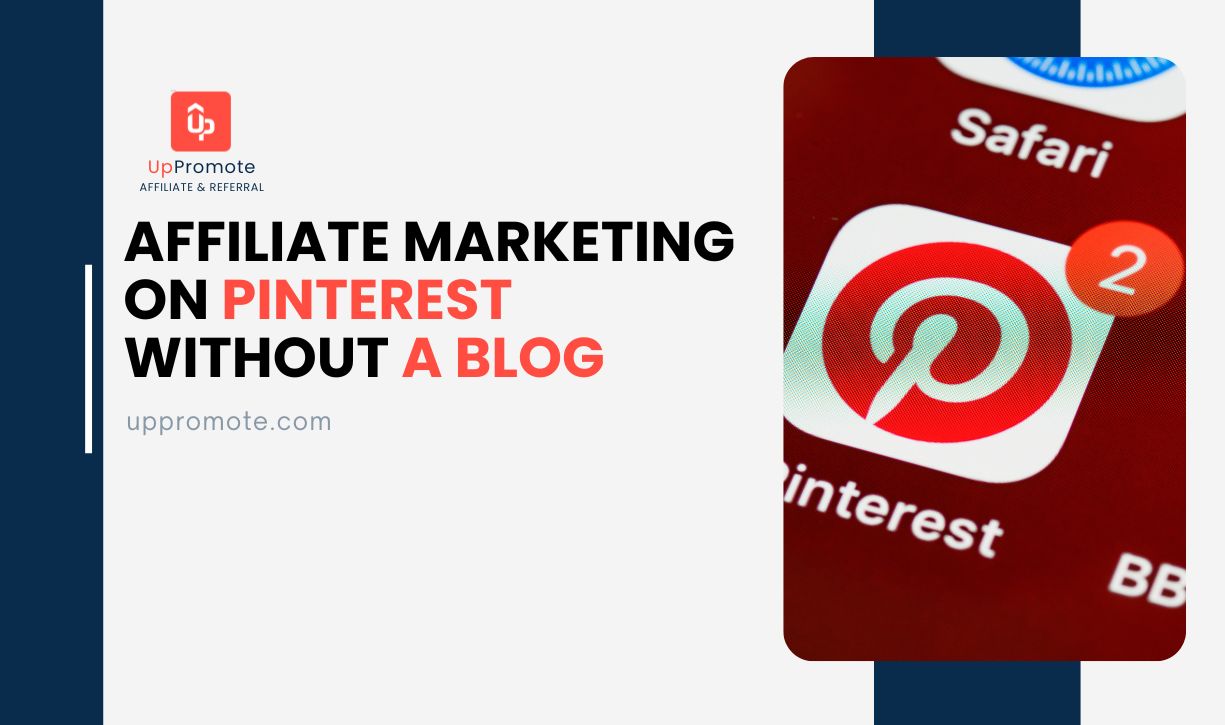How to Use Affiliate Marketing on Pinterest Without a Blog: Boost Sales!
To use affiliate marketing on Pinterest without a blog, create engaging pins with affiliate links. Utilize Pinterest boards strategically for maximum visibility and engagement.
Affiliate marketing is a powerful way to monetize your Pinterest account without the need for a blog. By leveraging the visual appeal of Pinterest, you can drive traffic and sales through affiliate links. In this guide, we will explore effective strategies for implementing affiliate marketing on Pinterest, from creating compelling pins to optimizing your boards for success.
Whether you are a seasoned affiliate marketer or new to the game, this article will provide you with actionable tips to make the most out of your affiliate marketing efforts on Pinterest. Let’s dive in and unlock the potential of affiliate marketing on this popular visual platform.

Credit: juice.ai
The Power Of Pinterest For Affiliate Marketing
Discover the potential of using Pinterest for affiliate marketing even without a blog. Utilize Pinterest’s visual platform to drive traffic and boost affiliate sales effectively. Engage with your audience through captivating pins and strategic content placement to maximize your affiliate marketing efforts.
Why Pinterest?
Pinterest is a platform that allows users to discover and save ideas through visual content such as images and videos. With over 450 million active users, Pinterest has a massive reach and is an excellent platform for businesses to promote their products and services. In recent years, Pinterest has become a popular platform for affiliate marketing due to its visual nature and user behavior. Unlike other social media platforms, Pinterest is a search engine that users utilize to find inspiration, ideas, and products. This makes Pinterest an ideal platform for affiliate marketing as users are already searching for products and ideas to purchase.The Affiliate Marketing Landscape On Pinterest
Affiliate marketing on Pinterest involves promoting products or services and earning a commission for each sale made through the affiliate link. As a Pinterest user, you can create pins with affiliate links that lead to the product page, and when users purchase the product through the link, you earn a commission. Affiliate marketing on Pinterest is a lucrative business as users on Pinterest are looking for inspiration and ideas, making it easier to convert them into customers. Moreover, it is an excellent way to monetize your Pinterest account without having to create a blog or website.Using Affiliate Marketing On Pinterest Without A Blog
To use affiliate marketing on Pinterest without a blog, you need to create a Pinterest account and join an affiliate program. You can search for affiliate programs that are relevant to your niche and apply to join them. Once you are accepted, you can start creating pins with affiliate links and promote them on Pinterest. It is essential to create visually appealing pins with high-quality images and descriptions that entice users to click on them. You can also join group boards and collaborate with other Pinterest users to increase your reach and visibility. In conclusion, Pinterest is a powerful platform for affiliate marketing, and you can use it to monetize your account without having to create a blog or website. By creating visually appealing pins with affiliate links and promoting them on Pinterest, you can earn a commission for each sale made through your link. Joining group boards and collaborating with other Pinterest users can also help increase your reach and visibility. With the right strategy and approach, affiliate marketing on Pinterest can be a lucrative business.
Credit: uppromote.com
Getting Started With Affiliate Marketing On Pinterest
Welcome to the world of affiliate marketing on Pinterest! Even without a blog, you can leverage the power of Pinterest to promote affiliate products and earn a commission. In this section, we will guide you through the essential steps to get started with affiliate marketing on Pinterest, from setting up your Pinterest account to understanding Pinterest SEO.
Setting Up Your Pinterest Account
To begin your affiliate marketing journey on Pinterest, the first step is to create a Pinterest business account. If you already have a personal account, you can easily convert it to a business account or create a new one specifically for your affiliate marketing efforts. Once your business account is set up, ensure that your profile is complete and reflects your brand or niche. Upload a clear profile picture and write a compelling bio that describes your niche and the value you offer.
Understanding Pinterest Seo
Pinterest SEO plays a crucial role in making your affiliate pins discoverable to a larger audience. When creating pins for affiliate products, incorporate relevant keywords in the pin title, description, and alt text. Conduct keyword research to identify popular search terms related to your niche and use them strategically in your pin content. Additionally, join and contribute to group boards within your niche to expand the reach of your affiliate pins.
Creating Captivating Pins
Discover the art of creating captivating pins to effectively utilize affiliate marketing on Pinterest without a blog. Learn how to craft visually appealing and engaging pins that drive traffic and conversions, without the need for a traditional blog platform. Elevate your affiliate marketing strategy on Pinterest with compelling and irresistible pins.
Creating captivating pins is essential for success on Pinterest.Design Tips For Eye-catching Pins
– Use vibrant colors to grab attention. – Include bold text overlays for emphasis. – Utilize high-quality images for clarity. – Maintain a clean and uncluttered layout.Writing Effective Pin Descriptions
– Keep descriptions concise and compelling. – Include relevant keywords for SEO. – Use a call-to-action to prompt engagement. – Showcase the value or benefit of the content.Choosing The Right Affiliate Products To Promote
Discover the art of choosing the right affiliate products to promote and learn how to use affiliate marketing on Pinterest without a blog. Explore strategies to maximize your earnings and reach a wider audience through effective product selection.
Criteria For Selecting Products
When it comes to affiliate marketing on Pinterest without a blog, choosing the right products to promote is crucial. By selecting the right products, you can maximize your chances of earning a commission and attracting potential buyers. Here are some key criteria to consider when selecting affiliate products:
- Relevance: The product should align with the interests and needs of your Pinterest audience.
- Quality: Ensure that the product is of high quality and offers value to potential buyers.
- Commission Rate: Look for products that offer a competitive commission rate to make your efforts worthwhile.
- Customer Reviews: Read customer reviews to gain insights into the product’s reputation and customer satisfaction.
- Promotional Materials: Check if the affiliate program provides attractive banners, images, or videos that you can use to promote the product effectively.
Finding Affiliate Programs
Once you have defined the criteria for selecting products, the next step is to find suitable affiliate programs. Here’s how you can find affiliate programs that align with your chosen products:
- Research: Conduct a thorough online search to find relevant affiliate programs in your niche. Use search engines and affiliate directories to discover potential opportunities.
- Check Product Websites: Visit the websites of products that you want to promote and look for affiliate program information in the footer or the “partners” section.
- Affiliate Networks: Consider joining popular affiliate networks like ShareASale, CJ Affiliate, or Amazon Associates. These networks provide a wide range of affiliate programs across various niches.
- Competitor Analysis: Look at the affiliate programs your competitors are promoting. This can give you an idea of successful programs in your niche.
- Reach Out to Brands: If you have a specific brand in mind that you would like to promote, reach out to them directly and inquire about their affiliate program.
By carefully selecting products based on the criteria mentioned above and finding suitable affiliate programs, you can set yourself up for success in affiliate marketing on Pinterest without a blog. Remember to always promote products that you genuinely believe in and that will provide value to your audience.
Strategies For Maximizing Engagement
Best Times To Post
Knowing the best times to post on Pinterest can significantly increase your chances of reaching a larger audience and maximizing engagement. By understanding the peak activity periods of your target audience, you can strategically schedule your affiliate marketing content to ensure maximum visibility.
Based on Pinterest’s own data, the best times to post on the platform are during evenings and weekends. Specifically, the highest engagement is observed between 8:00 PM and 11:00 PM, with Saturdays and Sundays being the most active days. These time slots are when users are typically winding down after a busy day and have more time to browse and explore content.
To take advantage of these peak hours, schedule your affiliate pins to go live during these time periods. By doing so, you increase the chances of your content being seen and shared, ultimately driving more traffic and potential conversions.
Leveraging Pinterest Analytics
Pinterest provides valuable insights through its analytics feature, allowing you to gain a deeper understanding of your audience’s preferences and behaviors. Leveraging these analytics can help you tailor your affiliate marketing strategy for maximum engagement.
Start by monitoring the performance of your pins. Identify which pins are receiving the highest engagement, such as saves, clicks, and comments. This information will give you valuable insights into the type of content that resonates most with your audience.
In addition to pin performance, Pinterest analytics also provides data on your audience demographics, interests, and devices used. Use this information to create targeted and relevant content that appeals to your specific audience segments. By understanding their preferences, you can craft compelling affiliate marketing content that is more likely to engage and convert.
Driving Traffic To Affiliate Links Without A Blog
Affiliate marketing on Pinterest without a blog is a lucrative way to generate income by promoting products and earning commission. One of the key challenges is driving traffic to affiliate links without a blog. Here are some effective strategies for achieving this:
Using Rich Pins
Rich Pins are essential for maximizing the visibility and impact of your affiliate links on Pinterest. By enabling Rich Pins, you can provide additional information about the products you are promoting, such as real-time pricing, availability, and where to purchase. This not only makes your content more informative but also increases the likelihood of click-throughs to your affiliate links.
Incorporating Keywords Effectively
Keywords play a pivotal role in enhancing the discoverability of your affiliate pins on Pinterest. Conduct thorough keyword research to identify relevant and high-performing keywords related to the products you are promoting. Integrate these keywords strategically into your pin titles, descriptions, and board names to optimize your content for search and attract organic traffic.
Building A Following On Pinterest
Discover how to build a strong following on Pinterest and maximize your affiliate marketing efforts without the need for a blog. Learn effective strategies to engage users and drive traffic to your affiliate links on this popular visual platform.
Engaging With The Pinterest Community
Utilizing Pinterest Boards Strategically

Credit: sthemarketer.com
Success Stories: Affiliate Marketing On Pinterest
Affiliate marketing on Pinterest can lead to significant success without the need for a blog. Many individuals have harnessed the power of this platform to generate income through affiliate partnerships. Let’s explore some success stories and learn valuable lessons from those who have excelled in affiliate marketing on Pinterest.
Case Study: From Zero To Hero
Meet Sarah, a stay-at-home mom who started her affiliate marketing journey on Pinterest with zero experience. By consistently creating engaging pins and sharing valuable content, Sarah saw her affiliate sales skyrocket within a few months.
Lessons Learned From Successful Pinners
- Consistency is key: Regularly posting fresh content keeps your audience engaged.
- Quality over quantity: Focus on creating visually appealing pins that drive clicks.
- Strategic pinning: Utilize keywords and hashtags to increase the visibility of your affiliate pins.
- Engage with your audience: Respond to comments and messages to build a loyal following.
Frequently Asked Questions
How Can I Start Affiliate Marketing On Pinterest Without A Blog?
To start affiliate marketing on Pinterest without a blog, create a Pinterest business account, build a strong profile, and focus on creating engaging content. You can also join group boards, use rich pins, and leverage Pinterest SEO to maximize your reach and conversions.
What Are The Best Practices For Affiliate Marketing On Pinterest?
The best practices for affiliate marketing on Pinterest include creating visually appealing pins, providing valuable and relevant content, using affiliate disclaimers, and diversifying your affiliate links. It’s also essential to engage with your audience, analyze performance metrics, and stay updated with Pinterest’s guidelines.
Is It Possible To Earn Money Through Affiliate Marketing On Pinterest?
Yes, it’s possible to earn money through affiliate marketing on Pinterest by promoting products or services and earning a commission on successful referrals. By following Pinterest’s policies, creating high-quality content, and understanding your audience’s interests, you can effectively monetize your Pinterest presence through affiliate marketing.
Conclusion
To sum it up, affiliate marketing on Pinterest is a great way to earn money without having a blog. By following the steps mentioned above, you can easily start your affiliate marketing journey on Pinterest. Make sure to focus on creating valuable content and building a strong audience base.
With time and effort, you can turn your Pinterest account into a profitable source of income. So, start exploring the world of affiliate marketing on Pinterest today!
